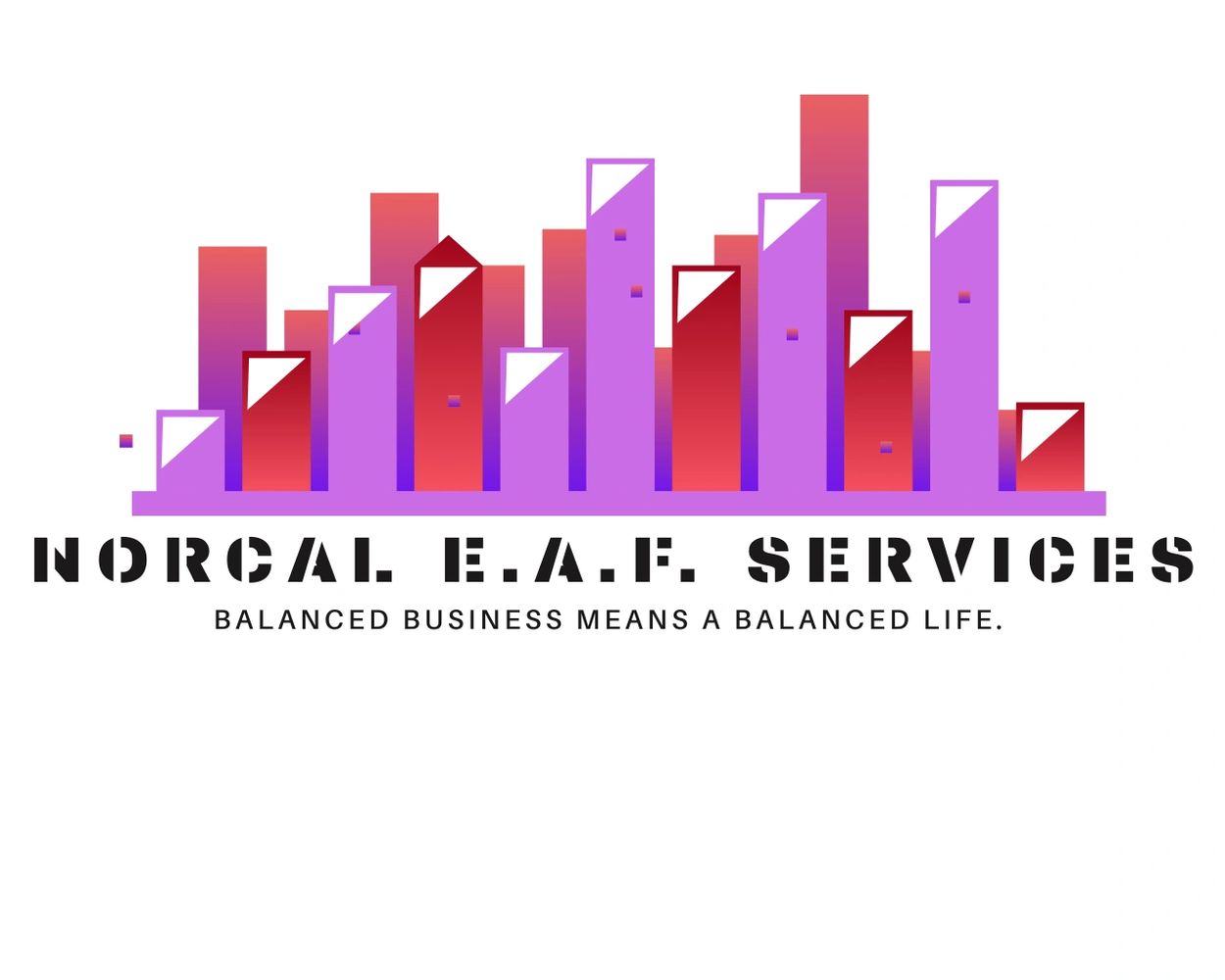
Welcome
Financial Services by NorCal EAF Services
Our expert bookkeeping and financial solutions, including tax services, are designed to help your business thrive with the support of NorCal EAF Services.

Our expert bookkeeping and financial solutions, including tax services, are designed to help your business thrive with the support of NorCal EAF Services.

At NorCal EAF Services, our mission is to deliver exceptional, tailored accounting and expert bookkeeping solutions that meet the unique needs of each client. We are committed to empowering businesses with the insights, expertise, and financial solutions necessary to achieve sustained tax compliance, financial success, and growth.
Please reach us at a.villavicencio@norcaleafservices.com if you cannot find an answer to your question.
The deadline for filing your taxes is typically April 15th. However, due to certain circumstances, the IRS may grant extensions. Contact NorCal EAF Services for more information.
If you miss the tax deadline, you may be subject to penalties and interest charges. It's important to file as soon as possible to avoid additional fees.
Yes, NorCal EAF Services offers tax planning services for small businesses to help minimize tax liability and maximize deductions.
The tax year 2026 adjustments described below generally apply to tax returns filed in 2027. The tax items for tax year 2026 of greatest interest to most taxpayers include the following dollar amounts:
(Additionally, for tax year 2025, the OBBB raises the standard deduction amount to $31,500 for married couples filing jointly. For single taxpayers and married individuals filing separately, the standard deduction for 2025 is $15,750, and for heads of households, the standard deduction is $23,625.)
For tax year 2026, the top tax rate remains 37% for individual single taxpayers with incomes greater than $640,600 ($768,700 for married couples filing jointly). The other rates are:
35% for incomes over $256,225 ($512,450 for married couples filing jointly);
32% for incomes over $201,775 ($403,550 for married couples filing jointly);
24% for incomes over $105,700 ($211,400 for married couples filing jointly);
22% for incomes over $50,400 ($100,800 for married couples filing jointly);
12% for incomes over $12,400 ($24,800 for married couples filing jointly).
The lowest rate is 10% for incomes of single individuals with incomes of $12,400 or less ($24,800 for married couples filing jointly).
The maximum credit allowed for adoptions for tax year 2026 is the amount of qualified adoption expenses up to $17,670, up from $17,280 for 2025. For tax year 2026, the amount of credit that may be refundable is $5,120.
For tax year 2026, the OBBB significantly enhances an important credit for employers; it increases the maximum amount of employer-provided childcare tax credit from $150,000 to $500,000 ($600,000 if the employer is an eligible small business).
The tax year 2026 maximum Earned Income Tax Credit (EITC) amount is $8,231 for qualifying taxpayers who have three or more qualifying children, up from $8,046 for tax year 2025. Revenue Procedure 2025-32 contains a table providing maximum EITC amount for other categories, income thresholds and phase-outs.
For tax year 2026, the monthly limitation for the qualified transportation fringe benefit and the monthly limitation for qualified parking increases to $340, up $15 from 2025.
For tax years beginning in 2026, the dollar limitation for voluntary employee salary reductions for contributions to health flexible spending arrangements increases to $3,400, up $100 from prior year. For cafeteria plans that permit the carryover of unused amounts, the maximum carryover amount is $680, an increase of $20 from tax years beginning in 2025.
For tax year 2026, participants who have self-only coverage in a Medical Savings Account, the plan must have an annual deductible that is not less than $2,900, up $50 from tax year 2025 – but not more than $4,400, an increase of $100 from tax year 2025. For self-only coverage, the maximum out-of-pocket expense amount is $5,850, up $150 from 2025. For tax year 2026, for family coverage, the annual deductible is not less than $5,850, up from $5,700 for 2025; however, the deductible cannot be more than $8,750, up $200 from the limit for tax year 2025. For family coverage, the out-of-pocket expense limit is $10,700 for tax year 2026, an increase of $200 from tax year 2025.
For tax year 2026, the foreign earned income exclusion is $132,900 up from $130,000 for tax year 2025.
For tax year 2026, the annual exclusion for gifts remains at $19,000. (However, the annual exclusion for gifts to a spouse who is not a citizen of the United States increases to $194,000 for calendar year 2026, up $4,000 from calendar year 2025.)
For tax year 2026, personal exemptions remain at 0, as in tax year 2025. The elimination of the personal exemption was a provision in the Tax Cuts and Jobs Act of 2017 and was made permanent by OBBB. (The personal exemption described here does not include the senior deduction added by OBBB.)
The limitation on itemized deductions was previously eliminated for tax years 2018 - 2025. The elimination of the limitation was made permanent by OBBB, although it imposes a limitation on the tax benefit from itemized deductions for those taxpayers in the highest tax bracket (37%).
The modified adjusted gross income (MAGI) amount used to phase out the Lifetime Learning Credit has not been adjusted for inflation for tax years beginning after Dec. 31, 2020. The Lifetime Learning Credit is phased out for taxpayers with MAGI between $80,000 and $90,000 ($160,000 and $180,000 for joint returns).
The date is approaching fast and we’re making preparations. Don’t miss out!
DaysDays
HrsHours
MinsMinutes
SecsSeconds
We use cookies to analyze website traffic and optimize your website experience. By accepting our use of cookies, your data will be aggregated with all other user data.